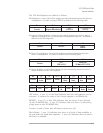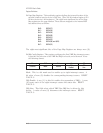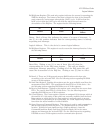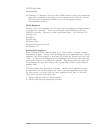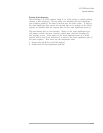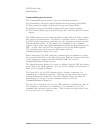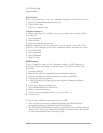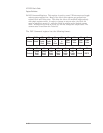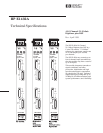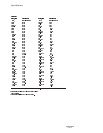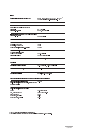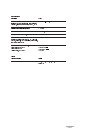
In order to avoid contention and/or invalid data reads, there are certain
rules that must be observed:
1 A controller must not write to any of the RAM registers when
Command/Parameter Ready is false.
2 The DSP must not write to any of the RAM registers when either
Command/Parameter Ready or Query Response Ready is true.
3 A controller must not read any of the RAM registers when Query Response
Ready is false.
4 The DSP must not read any of the RAM registers when Command/Parameter
Ready is true.
5 When writing a command together with parameter, a controller must always
write to the Command Register last.
6 When executing a command that requires it to return response data, the DSP
must set the Query Response Ready bit no later than the
Command/Parameter Ready bit.
7 The DSP must not clear the Done bit while Command/Parameter Ready is
true.
8 The DSP must not change the Err* bit while Done is true.
9 A controller must not regard the done bits a valid while Command/Parameter
Ready is false.
10 A controller must not regard the Err* bit as valid while Done is false.
Controller Protocol Examples
There are three basic procedures used by a controller, Write Command,
Read Response, and Wait for Done. These can be combined for more
complex sequences.
Write Command
This is the procedure to send a command to the DSP.
1 Wait for Command/Parameter Ready true.
2 Write any parameters to the Parameter registers and RAM.
3 Write the command to the Command register.
Read Response
This is the procedure for reading a response to query command.
1 Wait for Query Response Ready true.
2 Read the data from the Query Response register and any additional data from
the Parameter registers and RAM.
HP E1432A User's Guide
Register Definitions
A-13



